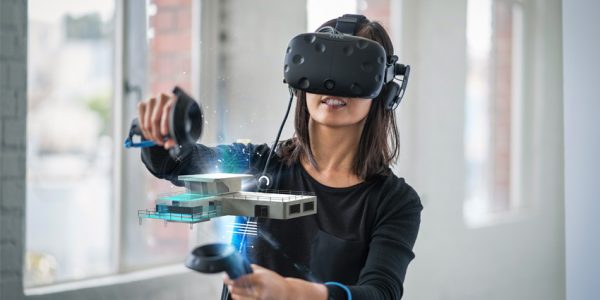
How to get the best audio experience from a VR headset
This is the first time a VR headsets audio quality has been evaluated, according to a study published in IEEE Transactions on Interactive Telecommunications.
The study found that high-end VR headsets like the Oculus Rift, Samsung Gear VR and Sony Playstation VR can offer superior audio quality than cheaper consumer headsets like a cheap headset like the HMDs Oculus Rift and the PlayStation VR.
As with most consumer VR headsets, the HTC Vive uses a special optical sound processing unit that produces sound using an acoustic waveguide, rather than traditional loudspeakers.
The headset is made of a special type of glass, which makes the sound more powerful and accurate, but is also more expensive to manufacture.
It also relies on a special audio processor, which can deliver better audio quality with a smaller audio signal footprint.
The researchers from the University of Michigan and the University at Buffalo found that the audio quality of the HTC VIVE was superior to similar consumer headsets in the range of around $1,000.
The HTC Vive can achieve audio quality that is around 40 percent better than its price point, which was $800.
In addition, the researchers found that when using the HTC headset on a PC, the headset was able to produce a sound that was around 25 percent louder than the audio of a similarly priced headset, which is good enough to justify the price tag.
The researchers found this to be the case because the HTC VR headset’s acoustic waveform is so accurate.
The HTC Vives audio system also uses special audio filtering to ensure that the headset can achieve a high fidelity audio experience.

These filters can reduce the amount of sound that is generated, which in turn can improve audio quality.
“With the HTC HMD, the acoustic waveforms are very different from the conventional loudspeakers,” said Daniel Schulze, a research scientist in the Department of Computer Science at the University.
“This has to do with the fact that the acoustic waves are so large that they can travel through the glass and become trapped in the crystal.
The sound is filtered and the sound becomes more coherent, which improves the quality of sound.”
For a better VR experience, the Hiddens audio processor also has to be able to process audio signals and combine them into a coherent soundscape, which sounds more immersive.
“It’s not that the sound is too bad,” said Schulge.
“The HMD is just a good audio device.”
As for the audio processor itself, the team said that the HID is able to achieve sound quality similar to that of a high-definition stereo audio system, or HMDS.
The HIDS is usually around $2,000, which has been the case with HMD products like the HTC Rift and Oculus Rift before.
However, this is the only HID headset in the world that can offer the same audio quality as a $2.99 HMD.
In addition to this, the Oculus VR headset can deliver audio quality around 40 to 50 percent better, which the Hid headsets audio system can achieve with the same budget.
The audio processor uses two special optical components that have different frequencies and phase information.
The first part of the optical components, called a transducer, generates sound waves that are then mixed with acoustic wave waves to produce sound, and the second part, called the acoustical amplifier, boosts the sound wave into a higher frequency.
A high-resolution, high-performance optical sound processor is also used to process sound.





